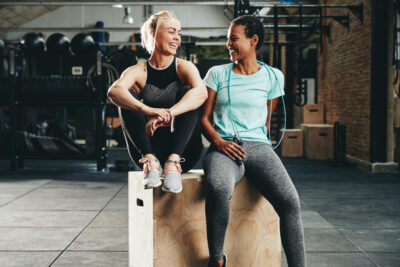You’ve vowed to make your life more calm, more flexible, maybe even more zen. But attempting to choose a class from the various yoga styles leaves your mind twisted into a virtual pretzel!
Never fear, I’m here to help explain the ins and outs of six of the most popular yoga styles out there so you can hit the mat with peace of mind and body, with the yoga style that’s ideal for your physical and spiritual needs…
Iyengar Yoga
Iyengar yoga, named for its creator B.K.S. Iyengar, focuses on precise alignment and accessibility to all practitioners. Iyengar is an ideal practice if you suffer from an existing injury, or chronic back or neck pain because of its use of various yoga tools (i.e., straps, blocks, blankets, and bolsters) to minimize risk of injury while providing ample joint and muscle support.
I recommend you consult a doctor before taking up any new form of exercise. Once you gain your doctor’s blessing, beginners can look to restorative Iyengar classes, which guide you through the asanas (poses) gradually with gentle and slow-paced breath work (pranayama) to help develop strength and flexibility as you gradually progress from basic to more complex poses.
Kundalini Yoga
To really energize your spiritual side, Kundalini yoga (or Laya yoga), takes inspiration from Tantra and Shakti by mixing the spiritual side of yoga with the physical movement. Kundalini, as the name suggests, is all about awakening your kundalini energy (which can be found at the base of the spine) in order to attain spiritual enlightenment.
This yoga, often referred to as the “yoga of awareness” will have you breathing and chanting along with your fellow matmates through a series of energizing poses. So don’t be shy, you’ll be breathing, chanting mantras, meditating, and moving to cultivate your spiritual betterment.
Hatha Yoga
All yoga is essentially “hatha,” which translates simply to “the willful practice of yoga postures.” This is why Hatha is an excellent place for yogi beginners to start, learn, and build upon their practice. It’s a slow, gentle paced style of yoga that focuses on holding poses for short durations accompanied by controlled breathing.
As you connect physical movements with the breath, Hatha will teach you the basic physical techniques, accentuate comfort and teach you to listen to your body, as they lead you through a series of stress-relieving postures.
Bikram Yoga
If you can stand the heat (and I’m talking 105-degrees Fahrenheit or 40-degrees Celsius) then Bikram yoga will certainly provide a satisfying sweat. This style of yoga was created by Bikram Choudhury in the early 1970s. Any “official” Bikram classes are taught by Bikram-certified teachers, who lead 90-minute classes.
Bikram’s focus is encouraging greater flexibility achieved by moving through the exact same series of 26 poses and 2 breathing (pranayama) exercises. Postures in Bikram are held for extended periods to boost strength and flexibility. Bring a full water bottle, a towel, and wear lightweight yoga attire because you will sweat…a lot!
Vinyasa Yoga
Dare I call this style cardiovascular, but you’ll literally feel the burn as you flow through the fast-paced, challenging style that is Vinyasa yoga (or power yoga). The term “vinyasa” translates to “arranging something in a special way”. In this case the “something” is yoga poses coordinated through breath and flow of movement from one pose to the next.
Vinyasa yoga is derived from classical Ashtanga yoga. It’s all about aligning breath with movement, as you build strength, tone muscles, and burn calories as you make your way through the smooth flow of poses. If you’re interested in Vinyasa style, check out master yogi, Baron Baptiste.
Ashtanga Yoga
The yoga style known as Ashtanga is the classical style of yoga, created and popularized by K. Pattabhi Jois in the early 20th century, in Mysore, India. This style focuses on the eight limbs of yoga, as detailed in the Yoga Sutras of Patanjali (a sacred text considered one of the foundations of classical yoga philosophy.
Ashtanga will challenge you mind and body with it’s five rounds of Surya Namaskara A (first sun salutation), five rounds of Surya Namaskara B (the second sun salutation or extended flow), followed by a standing sequence (consisting of 6 standing postures), and finally a finishing sequence of 16 harmonious asanas to encourage the flow of energy.









